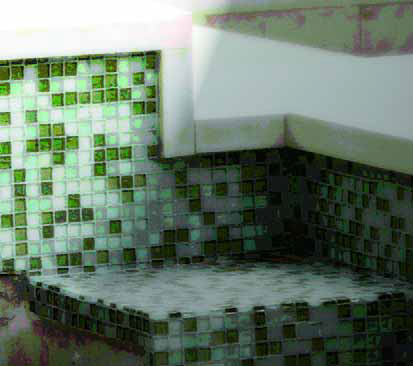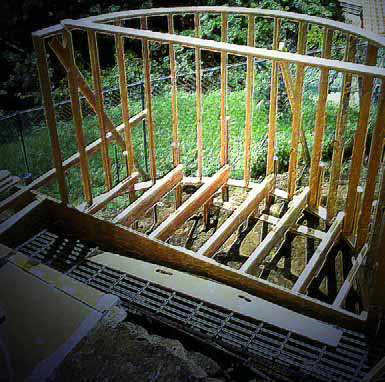project management
If there's a constant in watershape and landscape design and construction, it's that clients are almost invariably different from one another. Through years of watching how others approach these singularities, we've seen some designers (and builders) who are so set in their ways that they limit what they're willing to provide. Indeed, there even seems to be a bias in the industry at large toward elevating those designers who have a "trademark style." In our company's case, however, repetition of styles and features is not something that gets us going: Rather, we find it much more challenging and interesting to approach each project with fresh eyes and a genuine curiosity about our clients' dreams. To that end, our approach at Verdant Custom Outdoors (San Diego, Calif.) is all about understanding our clients and avoiding any preconceptions about what we think they might want. That in mind, we deliberately approach all clients and projects with a desire to meet individualized needs - a practice that has required us to become totally adaptable when it comes to both design and construction. To be sure, this approach adds a layer of complexity to what we do in that we start from scratch with every project. Our process requires a great deal of research, but as we see it, it's always been an investment of time and resources that constantly
When it comes to design in the watershaping industry, I see all of us who creatively put pencils to paper as being in states of transition - particularly where I live in the pool/spa realm, where design has traditionally been used as a sales tool and charging for design work was largely unheard of as a service above and beyond construction. All that is changing - and for the better, I think. But with more and more of us gravitating in the direction of professional design consulting either within companies or on our own, what's to guide us as we reach toward that goal? A book I've just read may be a big help: Andrew Pressman's Curing the Fountainhead Ache: How Architects and Their Clients Communicate (Sterling Publishing Co., 2006) has led me to recognize that good design is mostly about establishing effective dialogue with clients. Indeed, he has convinced me that the way I talk to my clients - and, as important, how well I listen to what they have to say in return - has everything to do with
When it comes to design in the watershaping industry, I see all of us who creatively put pencils to paper as being in states of transition - particularly where I live in the pool/spa realm, where design has traditionally been used as a sales tool and charging for design work was largely unheard of as a service above and beyond construction. All that is changing - and for the better, I think. But with more and more of us gravitating in the direction of professional design consulting either within companies or on our own, what's to guide us as we reach toward that goal? A book I've just read may be a big help: Andrew Pressman's Curing the Fountainhead Ache: How Architects and Their Clients Communicate (Sterling Publishing Co., 2006) has led me to recognize that good design is mostly about establishing effective dialogue with clients. Indeed, he has convinced me that the way I talk to my clients - and, as important, how well I listen to what they have to say in return - has everything to do with
With some details, seeing is believing. That's certainly the case with the one we'll consider in this column, where the images will do much of the work in defining a simple but elegant way of making a statement with any raised bond beam or wall. Yet again, it's testimonial to the good things that happen when watershapers know how to control materials and infuse their work with visual appeal. Most of the time when pool people build small or medium-size walls, they'll automatically be topped with some form of coping or capstone - anything from poured-in-place concrete or stone to brick or some pre-fabricated coping. Many of these walls are
When I first entered the watershaping industry in the late 1970s, one of the details to which I took an immediate dislike was the practice of wrapping the tile that covered the walls of raised bond beams around the corner and onto step risers and various other vertical hardscape surfaces found around pools and spas. We've all seen it - Spanish Colonial Revivalist tiles of questionable authenticity, extra-bold in color and used to cover highly visible vertical surfaces. To me, these swaths invariably look out of place and have the effect of drawing attention to features that often don't warrant or benefit from the emphasis. It happens to this day because
Although my practice primarily encompasses residential landscapes, I occasionally tackle a commercial project. In one such case, I was recently asked to design the entry planting and make recommendations for the hardscape at the Riviera Country Club in Pacific Palisades, Calif. One of the most prestigious golf courses in the world, Riviera is the regular host to the Nissan Open, one of the sport's premier tournaments. It's a high-profile site in every conceivable way, so image is everything to the facility's owner and managers. After many years of placing what were essentially band-aids on the entry's landscape, they decided it was time for a complete overhaul and a
Beginning a project can be wonderfully exciting, especially when you're working in a beautiful place with a terrific client who wants something truly elegant and special. In fact, I can honestly say that there's nothing quite like the exhilaration of stepping into a new situation with great potential, defining those possibilities and watching a client's eyes light up with the fire of inspiration. Case in point: Not long ago, my partner Kevin Fleming and I were called out to a job site on Long Beach Island, N.J., by local landscaper Mark Reynolds, who'd heard of us and our reputation for using top-quality materials in top-flight designs. When we pulled up, the first thing I noticed was the
Despite the axiom that "every client is a good client," we all know that some of them are wonderful to work with - and that dealing with others is a form of slow torture. I've always loved hearing the horror stories about bad customers that float around the watershaping trades: The telling and retelling of these nightmares (often with exaggerations as the stories travel from ear to ear) is often a treat, and I know I've had my share of therapeutic fun at the expense of a knucklehead or two. We don't generally hear quite so much about the good ones, but it's fair to say that most of us have lists of satisfied clients and that our experiences with them give us much of the motivation we have to stay in the business. What it boils down to is this: Each and every client is
One of the things I've referred to repeatedly through the years is my interest in quality forming for watershapes. I look at it this way: If the job is about creating quality reinforced-concrete structures, then precisely controlling their dimensions and contours stands at the very heart of the art and craft of watershaping. And all I'm recommending here is simply following the lead of the experts who install building foundations and structural walls by using completely rigid materials and support frameworks. To drive that point home, I want to discuss the forming of one specific detail - and define a right way of getting it done. One of my trademarks is the fact that I build many pools that are
One of the things I've referred to repeatedly through the years is my interest in quality forming for watershapes. I look at it this way: If the job is about creating quality reinforced-concrete structures, then precisely controlling their dimensions and contours stands at the very heart of the art and craft of watershaping. And all I'm recommending here is simply following the lead of the experts who install building foundations and structural walls by using completely rigid materials and support frameworks. To drive that point home, I want to discuss the forming of one specific detail - and define a right way of getting it done. One of my trademarks is the fact that I build many pools that are





















